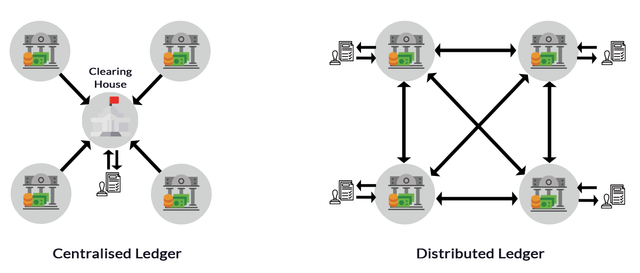What is Distributed Ledger Technology and Blockchain?
Distributed ledger technology (DLT) and blockchain are usually used interchangeably, but are they exactly the same? No. While such sassy technological vocabulary hitting headlines almost on a daily basis, few people take the time to understand the real meanings behind the buzzwords. In this article, we dive deeper into the misconception and outline their similarities and differences.
What is DLT?

Starting from the conception of the distributed ledger technology. Since the creation of ledger, the foundation of accounting, its medium has experienced major evolvement several times over the millennia, i.e. from clay tablets and papyrus to paper book and spreadsheets. Yet none of the evolvement, even digitisation, ever changed the backbone of accounting – the reliance on authentication from a central authority.
That is no longer the case for DLT, where data are spread across all the participants or nodes and updated independently by each node in the network. That is to say, every transaction is processed, verified and updated by every single node, thereby avoiding the cost of trust and revolutionising the way in which information is gathered and communicated.
What is a Blockchain?

Sounds familiar, right? Because it also has been used to describe blockchain technology. In fact, blockchain technology is nothing else but a distributed ledger with specific characteristics. It denotes a chain of blocks which contain the data stored inside the block, the hash (encrypted signature) of the block and the hash of the previous block. In essence, it is also a public database which is digitised and decentralised without a central point in the network; the architecture of both has merits of efficiency, transparency and security.
Differentiating Blockchain from Distributed Ledger Technology
Beneath the surface, what’s the difference between the two intertwined concepts? Long story short, blockchain is a specific type of distributed ledger, but not all distributed ledgers are blockchain. DLT is an umbrella term denoting all technologies, blockchain included, which require decentralisation and consensus among nodes. An easy way to understand their relationship is by analogy with Kleenex and facial tissues – a subcategory has become so influential that it ends up devouring its namesake.
On top of that, blockchain technology possesses several characteristics which are not shared with other DLT. A distributed ledger won’t necessarily, for instance, construct a chain of blocks to store data and require proof of work when you attempt to generate new information. Importantly, not all distributed ledger would adopt the append-only pattern in recording data as blockchain does.
Conclusion and thoughts?
DLT broadly, and blockchain specifically, share the same conceptual origins to make the world more decentralised, transparent and secure, but these terms are not the same. As the cryptoworld continues to advance, a plethora of DLT-based variations of blockchain technology are sprouting to compensate the drawbacks of blockchain. Hashgraph, IOTA’s Tangle Network, NANO to name a few. With growing possibilities outside the domain of traditional blockchain system, understanding the difference between the two could prove invaluable.